The A. Lange & Söhne Cabaret Tourbillon Handwerkskunst, The Return of a Classic ALS (Live Pics & Price)
Lange’s exuberant Cabaret Tourbillon is back in gleaming platinum with a monochrome dial and elaborate hand finishings.
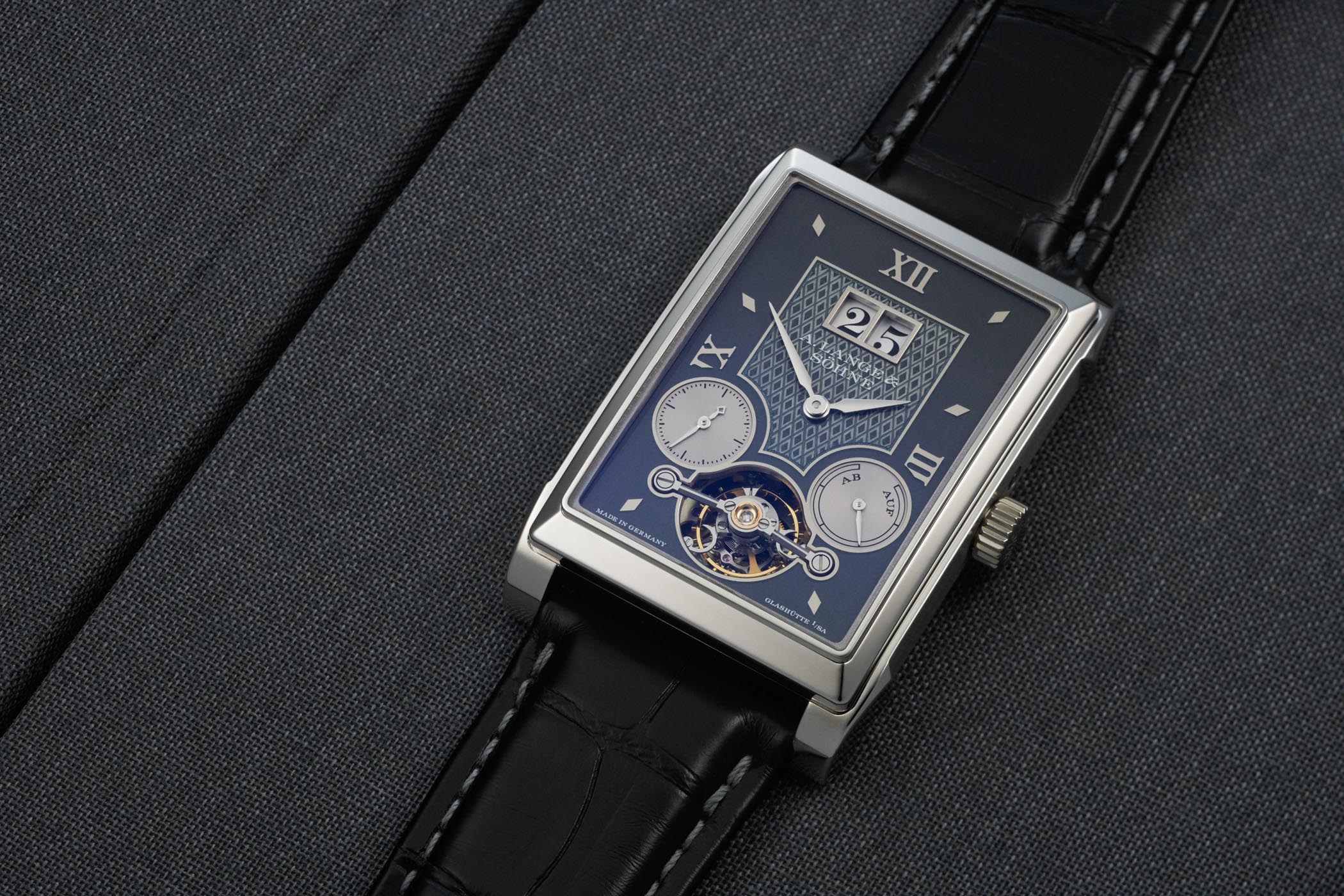
In 1997, A. Lange & Söhne introduced the Cabaret. A very unlikely name given the brand’s august Saxon spirit, the Cabaret was also Lange’s first rectangular watch since its rebirth in 1994. Not to be mistaken with the Arkade, which formed part of the quartet of watches that marked the brand’s revival, the Cabaret had a distinctive Art Deco spirit. The most spectacular and complicated version of the Cabaret was the Tourbillon edition that went out of production in 2013. Today, collectors can celebrate with the return of this limited 30-piece edition of the Cabaret Tourbillon in a gleaming 950 platinum case. As Lange’s seventh model in its hyper-exclusive Handwerkskunst collection, the finishings are of the highest order. However, before looking at the rich details and unique rectangular movement with stop-seconds for the tourbillon, a few words explaining its genesis might help.
Life is a Cabaret
Although it is hard to conceive a rectangular watch in Lange’s line-up of round watches, there is a historical antecedent corresponding to a more obscure chapter in the brand’s history.
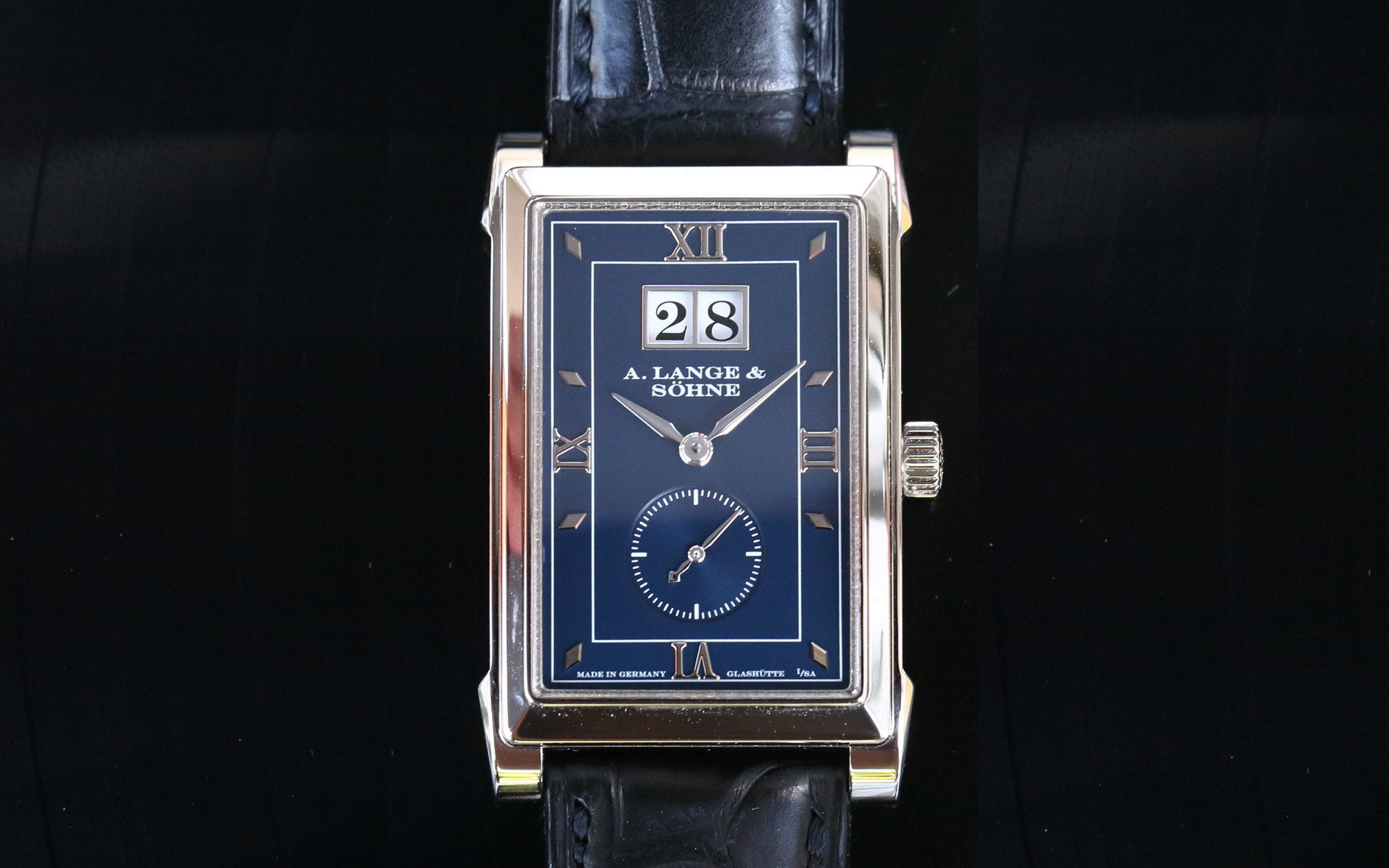
The transition from pocket watch to wristwatch was, according to the reliable website Langepedia, traumatic for the Glashütte brand that was teetering on bankruptcy: “Following WWI, the demand for pocket watches fell sharply and A. Lange & Söhne neither had the know-how nor the material to produce a wristwatch collection.” Then in the hands of third-generation Otto, Rudolf and Gerhard Lange, the 1920s were a rough wake up call for the Saxon brand. As Reinhard Meis writes in the impressive tome, “A. Lange & Söhne The Watchmakers of Dresden”, “nobody wanted to believe that the age of the hand-crafted watch was coming to an end”. Coupled with the devastating economic crisis of 1923 and the lifting of the import ban on Swiss watches at the end of 1924, Lange needed to rethink its entire strategy. Cheaper machine-made Swiss wristwatches and pocket watches flooded the market, and, as Meis explains, Lange had to face the fact that “there was no commercial future in their hand-built pieces. It was high time to adopt new production methods and machinery to avoid being left behind by the world market”.
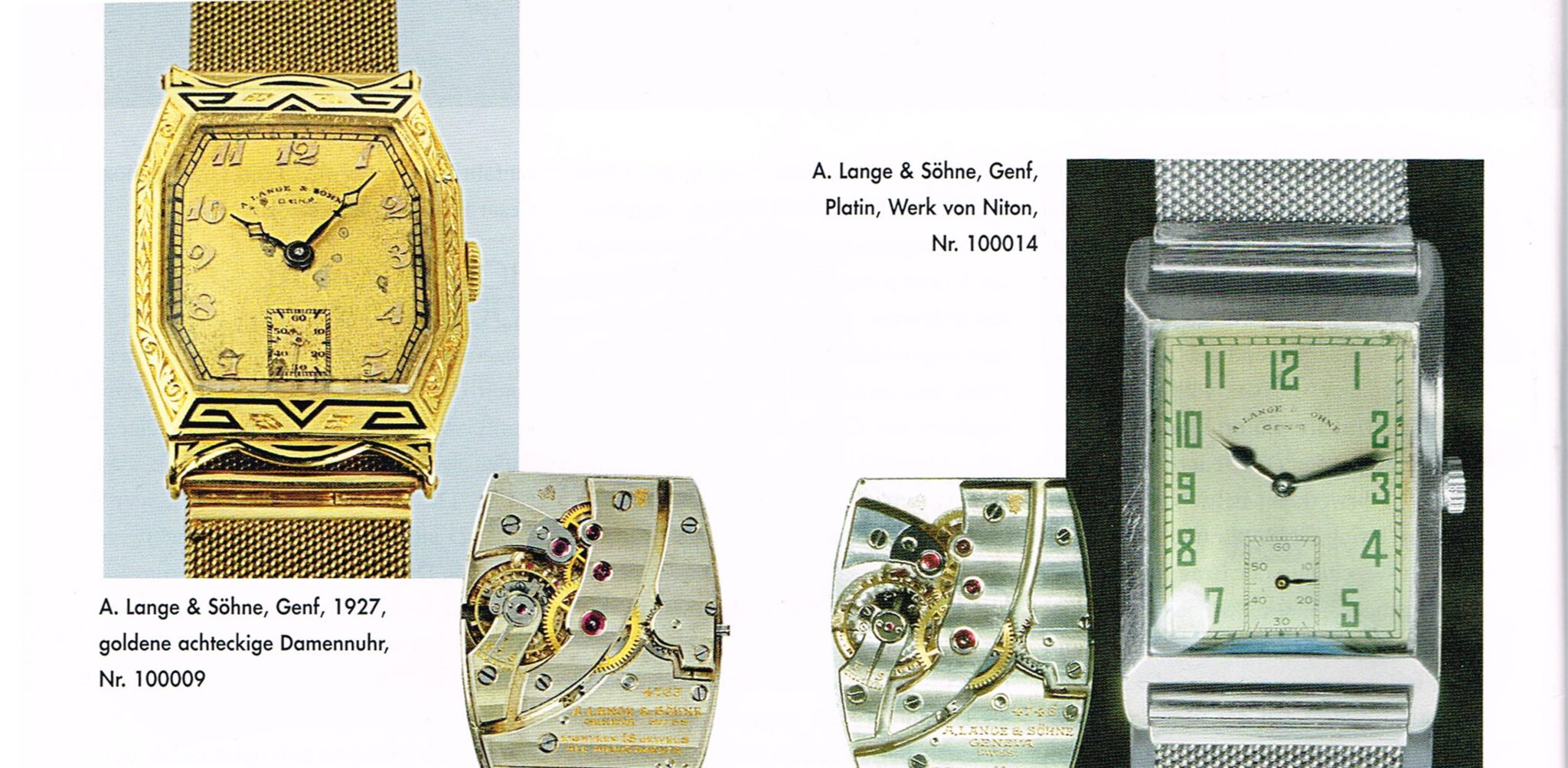
In 1927, Lange decided to outsource smaller Swiss wristwatch movements from Altus. In tune with the Art Deco aesthetic of the time, the wristwatches were rectangular with shaped movements to match. Commercialised under different names (Lange-Uhr Glashütte and A. Lange & Söhne Genf.), some of these early examples pop up at auction.
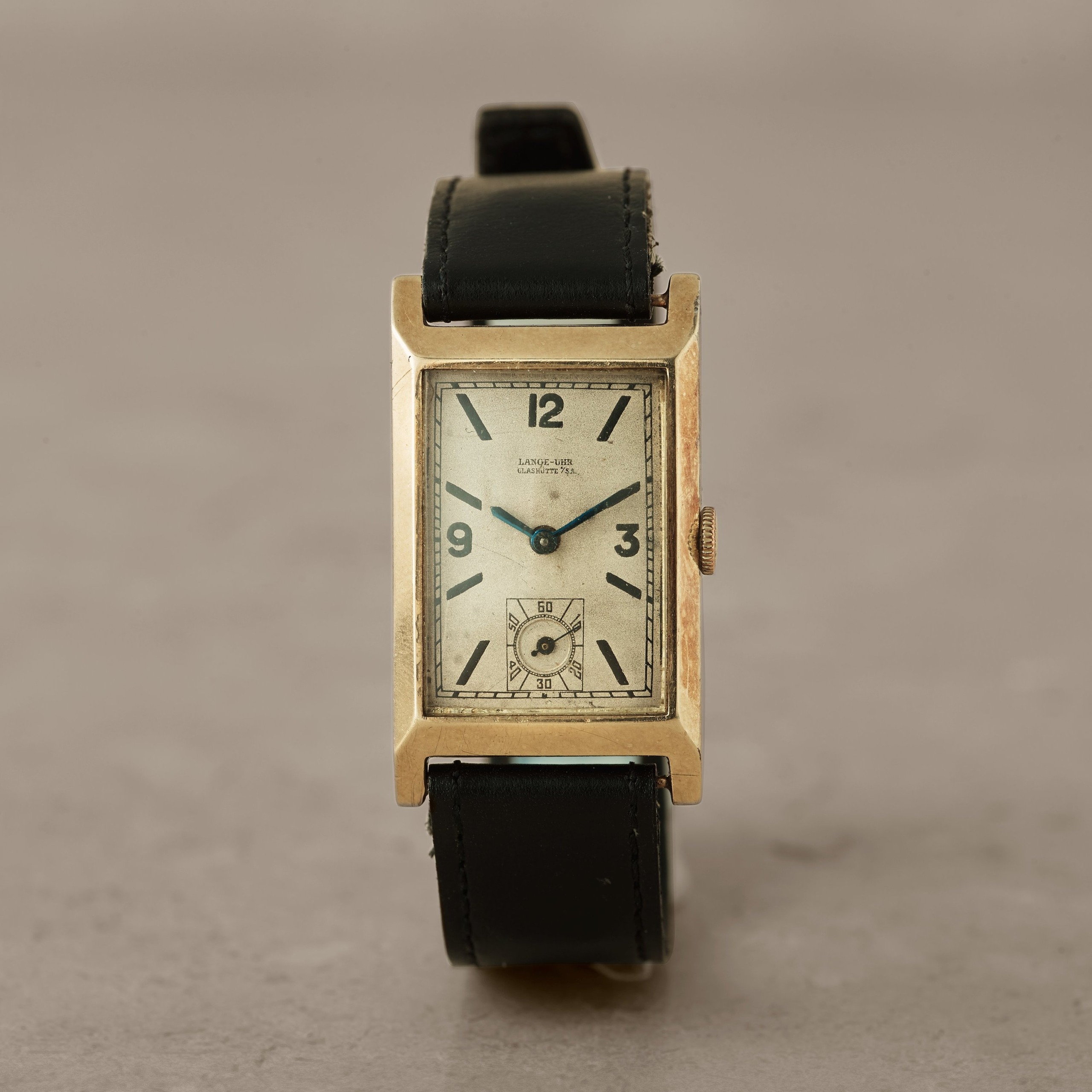
The calibre 9 barrel-shaped movement of this particular gold model was made by Altus with the finishing touches done by Lange in Glashütte. Looking closely at the elegant lines of the case, I would even venture that this model might have been one source of inspiration for the Cabaret.
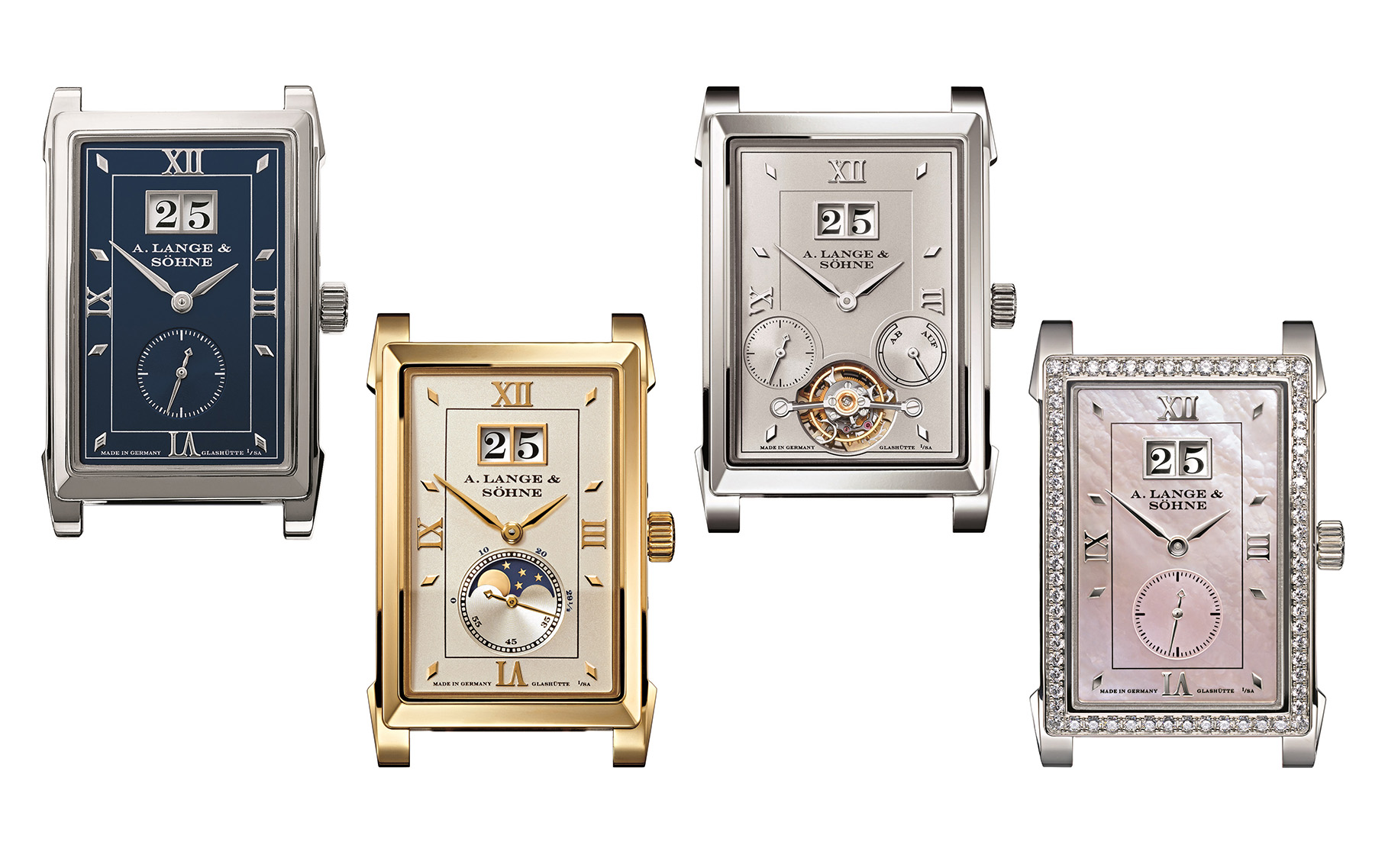
The first rectangular Cabaret model of 1997 might have come as a surprise, but one particular feature marked it as a Lange child: the outsize date. There was a sense of exuberance about this watch, and its rectangular profile inevitably sparked comparisons to the ‘other’ famous rectangular watch. As all Lange aficionados know, Walter Lange’s partner in the revival of the brand was engineer Günter Blümlein who had presided Jaeger-LeCoultre (and IWC) when he was head of Les Manufacturers Horlogères (LMH). However, putting the Reverso and the Cabaret side-by-side reveals two very different personalities. With its big date and powerful lines, the Cabaret exhibited a more assertive, more German personality.
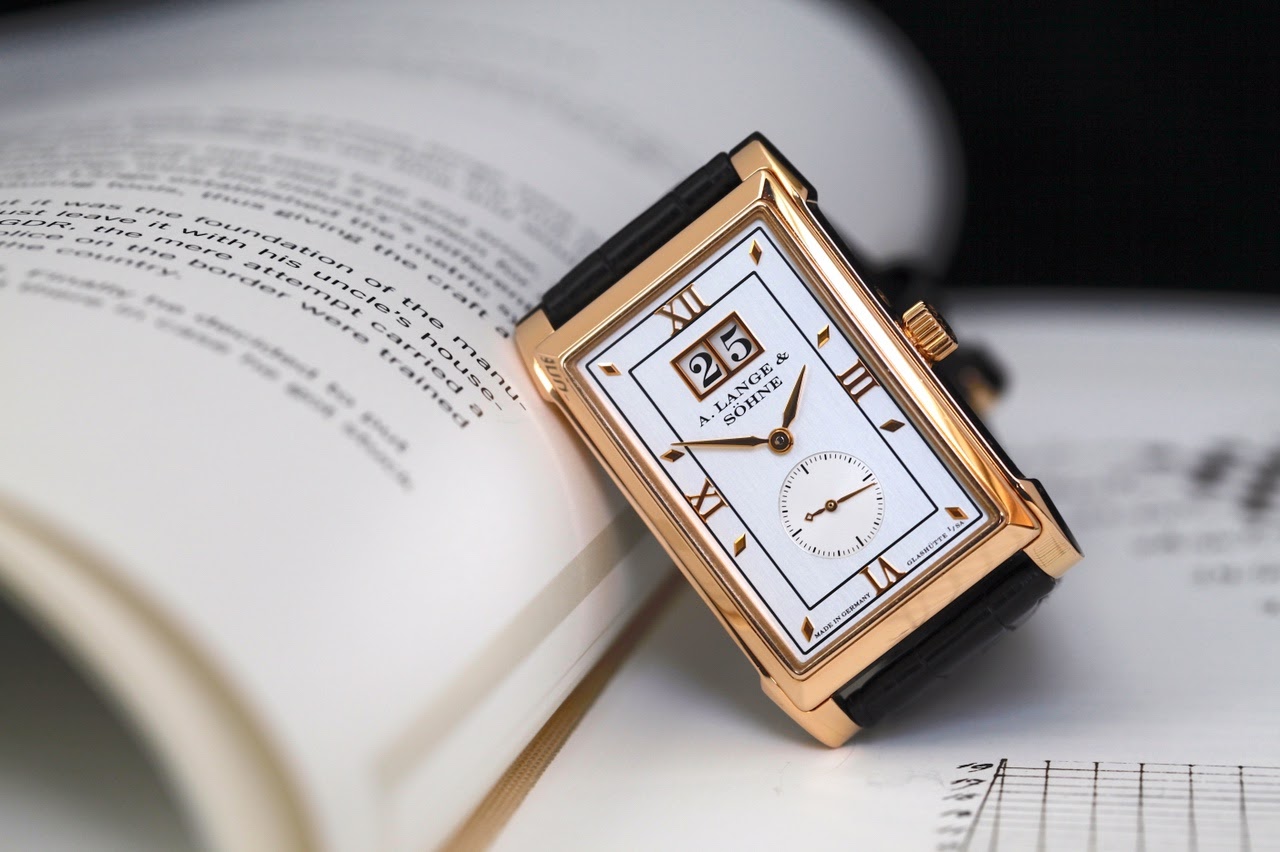
Undoubtedly, one of Lange’s most complex and detailed cases, the architecture of the first Cabaret revealed a cambered and stepped bezel and an elongated case middle with prominent lugs. Viewed from the side, you can appreciate the gentle camber, the jutting lugs and the brushed finishing on the caseband to contrast with the brightly polished lugs and bezel.
The first models of the Cabaret were simple, time-only pieces with the big date at noon, a snailed small seconds counter at 6 o’clock, applied gold Roman numerals at XII, III, VI and IX and lozenge-shaped indices. A second rectangular shape on the dial, framing the date and seconds, emphasised the powerful rectangular shape of the case. Powered by the brand’s rectangular-shaped hand-wound calibre L931, the view from the caseback revealed classic Lange flourishes like the Glashütte ribbing on the three-quarter bridge, the hand-engraved balance cock, the blued screws and gold chatons.
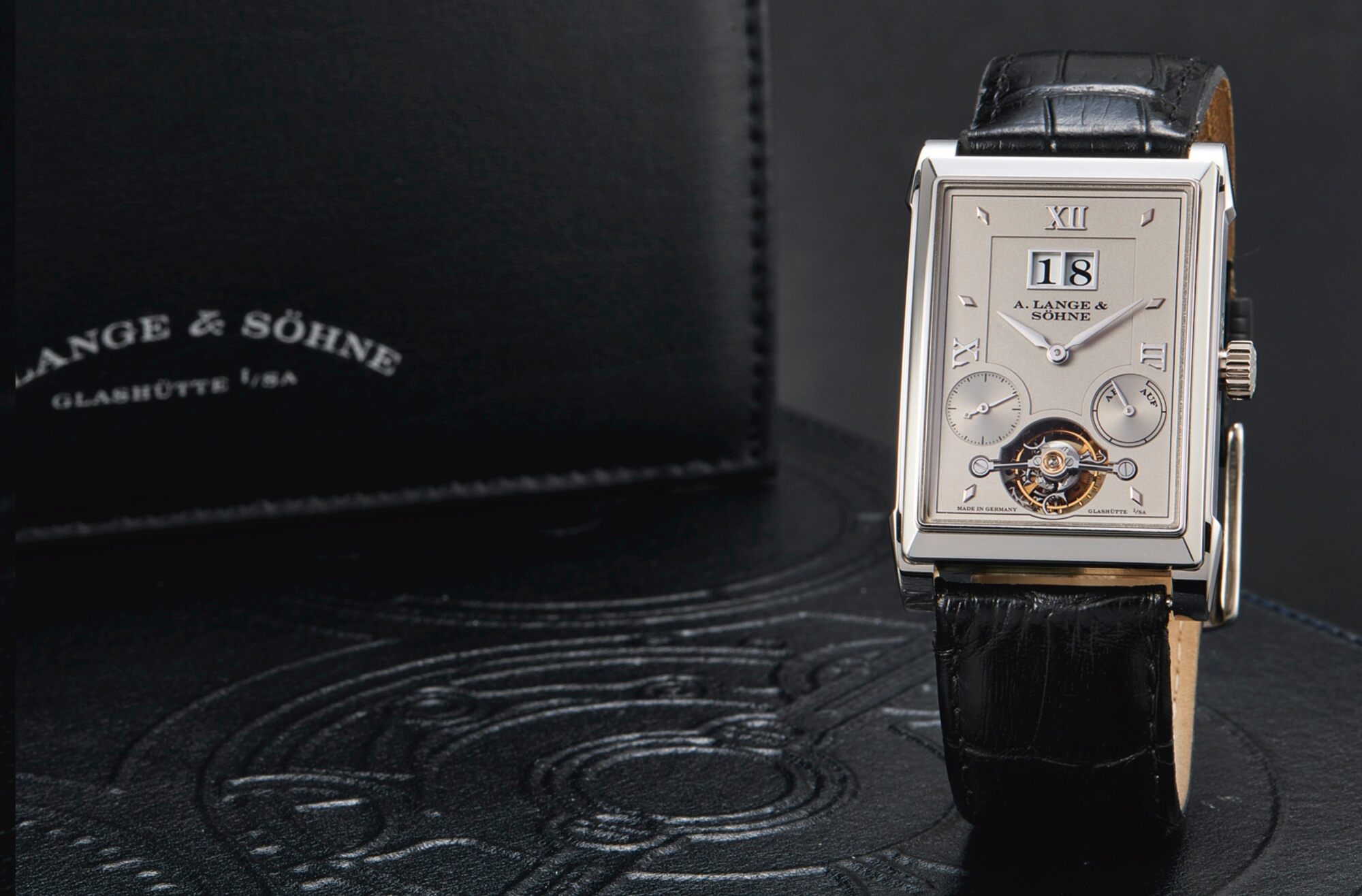
A moon phase indicator placed inside the small seconds appeared in 2004, but it wasn’t until 2008 that the Cabaret was upgraded with a tourbillon complication. Produced in platinum and pink gold cases for just five years, the Cabaret Tourbillon had a larger case than its predecessors had and displayed the tourbillon in an aperture at 6 o’clock with two smaller counters on either side for the running seconds and power reserve. What really fascinated collectors, however, was on the reverse side of the case.
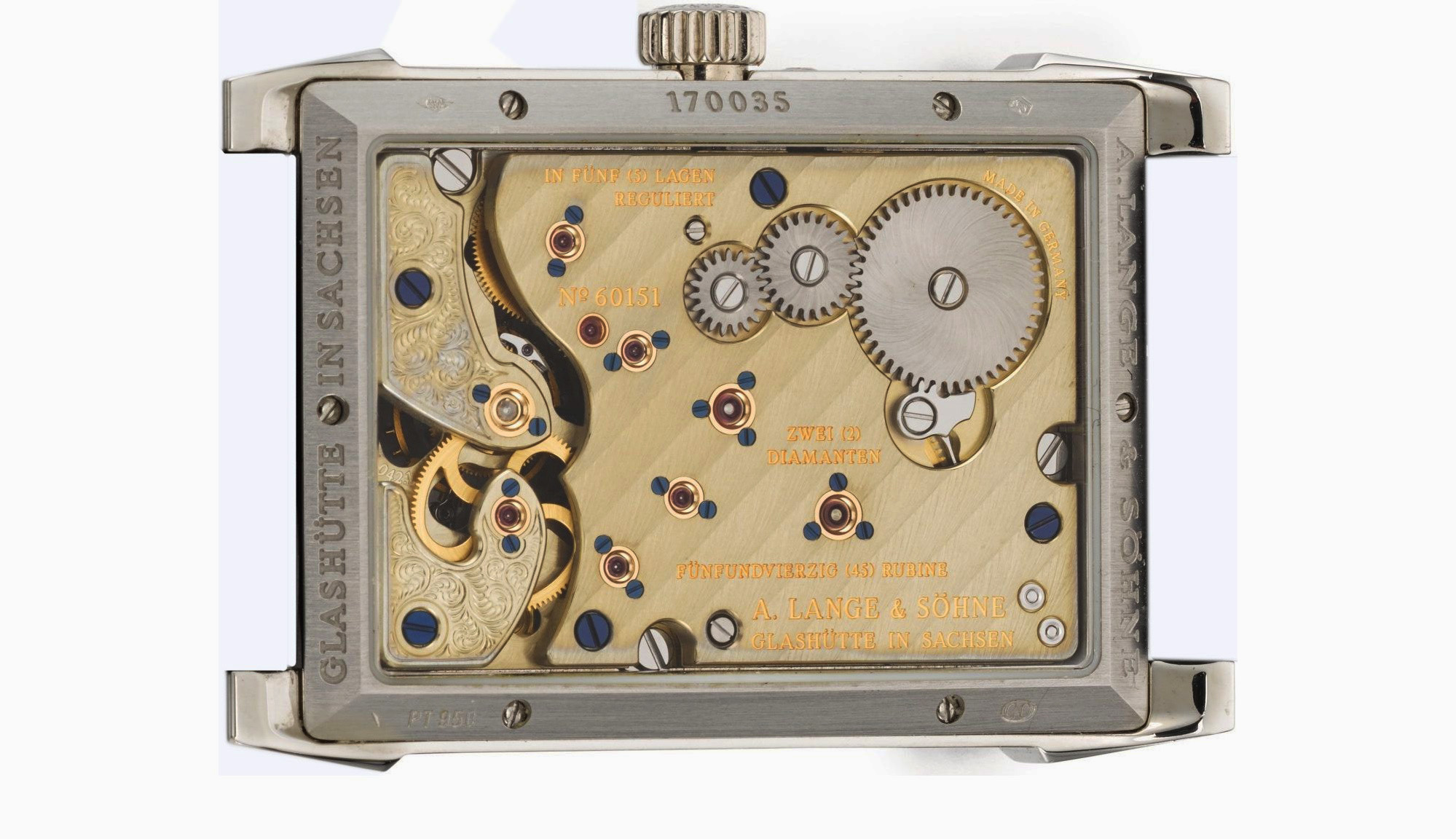
Lange’s impressive calibre L042.1 was the first mechanical wristwatch with stop-seconds for the tourbillon. A milestone in precision watchmaking, the Cabaret Tourbillon was capable of instantaneously stopping the balance inside the rotating case and instantly restarting at the crown.
The Cabaret Tourbillon Handwerkskunst
Five years after it was discontinued, the Cabaret Tourbillon spins back into the limelight in this ultra-elaborate Handwerkskunst edition made of 950 platinum. Like the former editions, the rectangular case is 29.5mm wide, 39.2mm long and has a thickness of 10.3mm.
As a member of the elite Hankwerkskunst (craftsmanship) collection, the decorative flourishes are simply spectacular. The three-part dial is made of solid white gold and crafted entirely in-house. The central area surrounding the oversize date is beautifully hand-engraved with a lozenge pattern that echoes the applied lozenge hour markers. Set against a matte grey background, the six lozenge indices are accompanied by three Roman numerals at XII, III and IX. Many details on the dial, like the frames of the date window and the thin line separating the different areas of the dial, are decorated with Lange’s tremblage technique. Using a flat burin with sharp teeth, the engraver guides the instrument across the white gold in different directions creating tiny indentations that result in a slightly granulated matte surface.
Following the engraving, the dial is then coated with a semi-transparent enamel layer that adds depth and reveals the different metallic shades of grey. The two sub-dials for the small seconds and AB/AUF power reserve are made of rhodium-plated gold and snailed. The only polished elements on the predominantly matte grey dial are the gold hands and the brand name applied below the date window.
Naturally, the one-minute tourbillon is the showpiece of this model and is suspended between two diamond endstones. The lower half of the tourbillon bridge is matte to match the dial, but the upper section is black polished to a mirror finish. Entirely executed by hand, black polishing is considered one of the most difficult types of finissage.
Calibre L042.1
Lange’s manual-winding calibre L042.1 is a masterpiece of technology and craftsmanship. Measuring 22.3 by 32.6mm, the movement is tailored to the rectangular case. Compared to the 2008 version, this calibre has an indexless oscillation system with a Lange balance spring. For the rest, and technically speaking, it is the same base as what Lange introduced in 2008.
Composed of 370 parts, of which 84 correspond to the tourbillon, the movement marks a milestone in the history of the tourbillon. More than 200 years after Breguet invented the tourbillon, A. Lange & Söhne managed to stop the oscillating weight inside the rotating cage allowing the owner to set the timepiece to the precise second. By extracting the crown, a complex lever mechanism is triggered, as it pivots a movable V-shaped spring onto the balance wheel rim. The balance stops instantaneously, even if one of the spring arms is in contact with one of the three cage posts. The special geometry of the spring assures that the pressure imposed on the balance is always correctly dosed, regardless of the position of the cage. An advantage of this design is that it preserves the potential energy of the balance spring so that the balance can restart instantly as soon as the arresting spring is retracted when the crown is pushed back.
What changes drastically compared to the 2008 version of this calibre L042.1 is the finishing. Being part of the Hankwerkskunst series of watches, it benefits from a special decoration, which includes the signature tremblage technique on the 3/4 German silver bridge, something reminiscent of movements found in antique pocket watches. Of course, classic elements such as the gold chatons held in place by blued screws are still present – and there are no fewer than 8 of them on both the train-wheel bridge, as well as on the tourbillon and intermediate wheel cocks. Finally, echoing the decoration of the dial, these two bridges are engraved with the same lozenge motif finished in black rhodium. As you’d expect from an A. Lange & Söhne’s movement, all the parts are meticulously decorated by hand, whether they are visible or not. The engraved inscriptions on the plate are black-rhodiumed as well.
Availability & Price
The 2021 A. Lange & Söhne Cabaret Tourbillon Handwerkskunst (ref. 703.048) will be a limited edition of 30 individually numbered pieces. It is worn on a black alligator strap with grey seam and a 950 platinum deployant buckle. It will be priced at EUR 315,000 (incl. German taxes).
For more details, please visit www.alange-soehne.com.

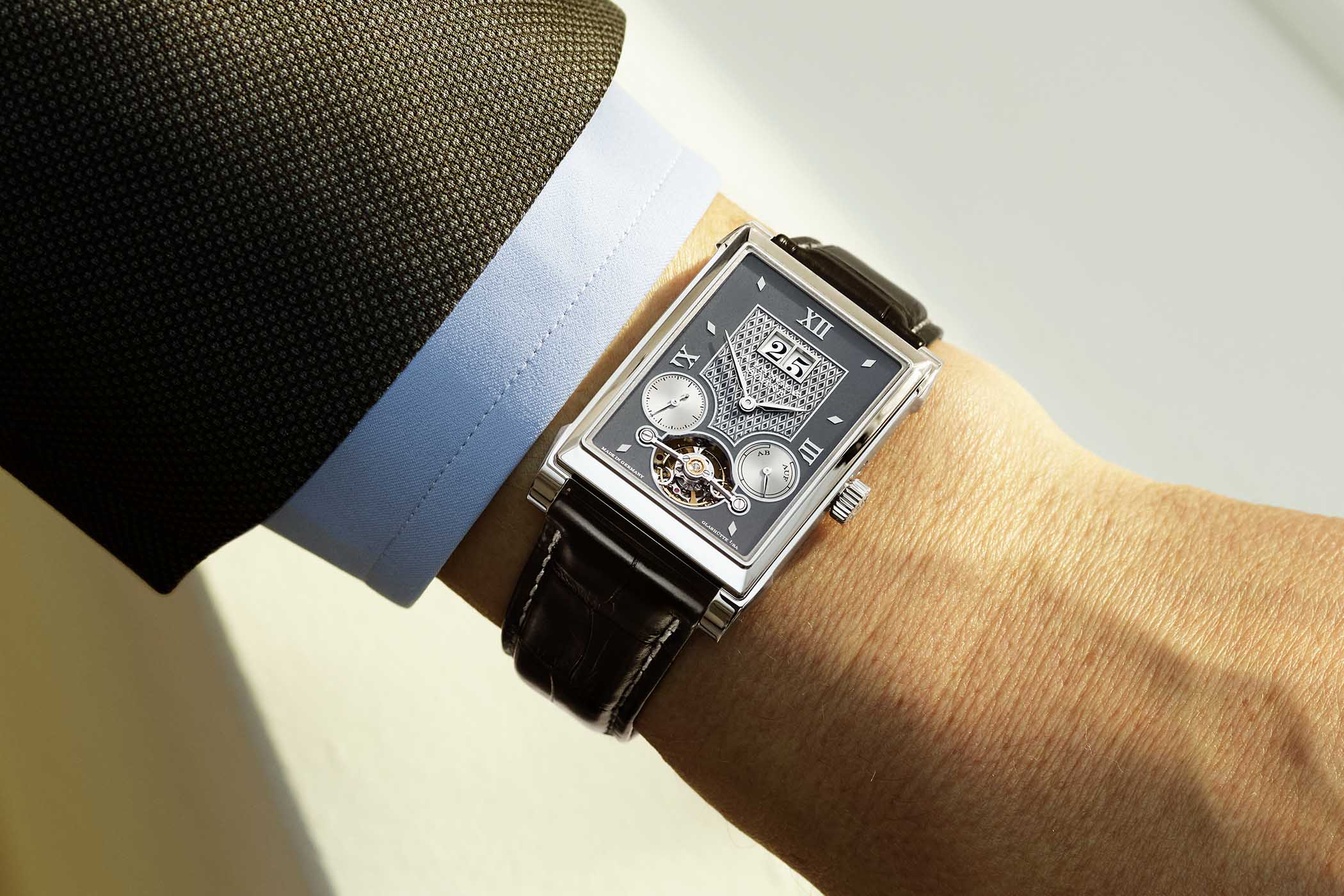
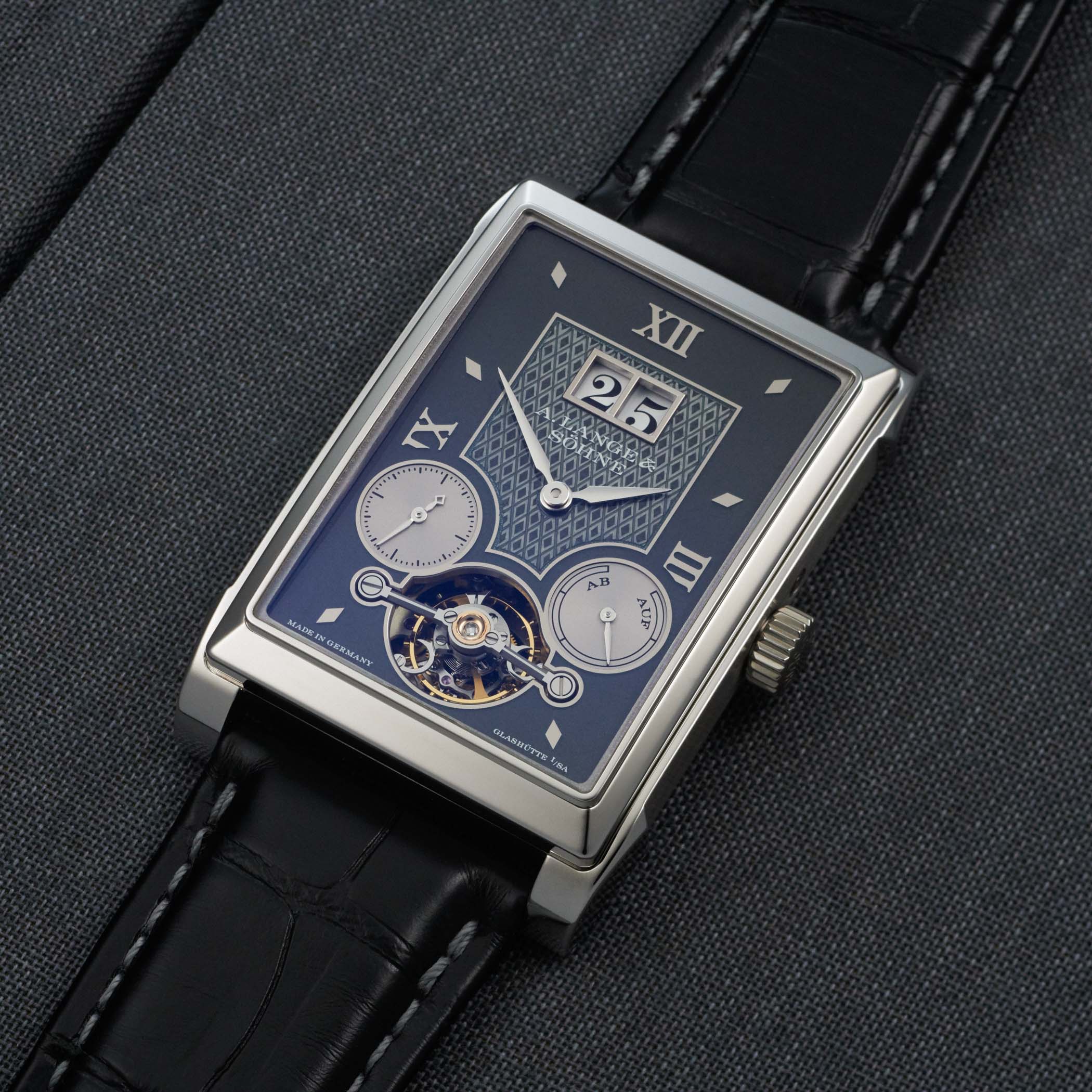

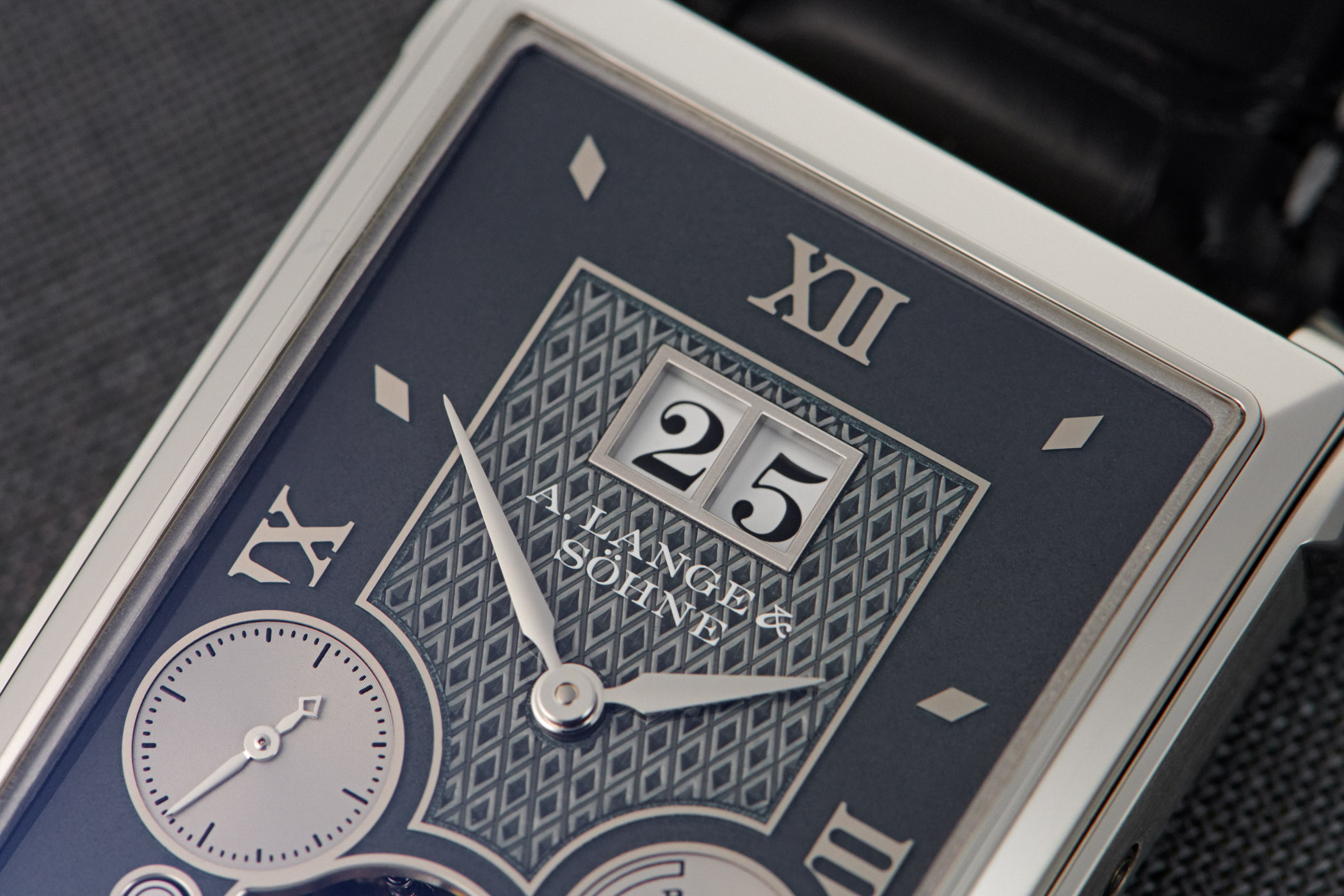


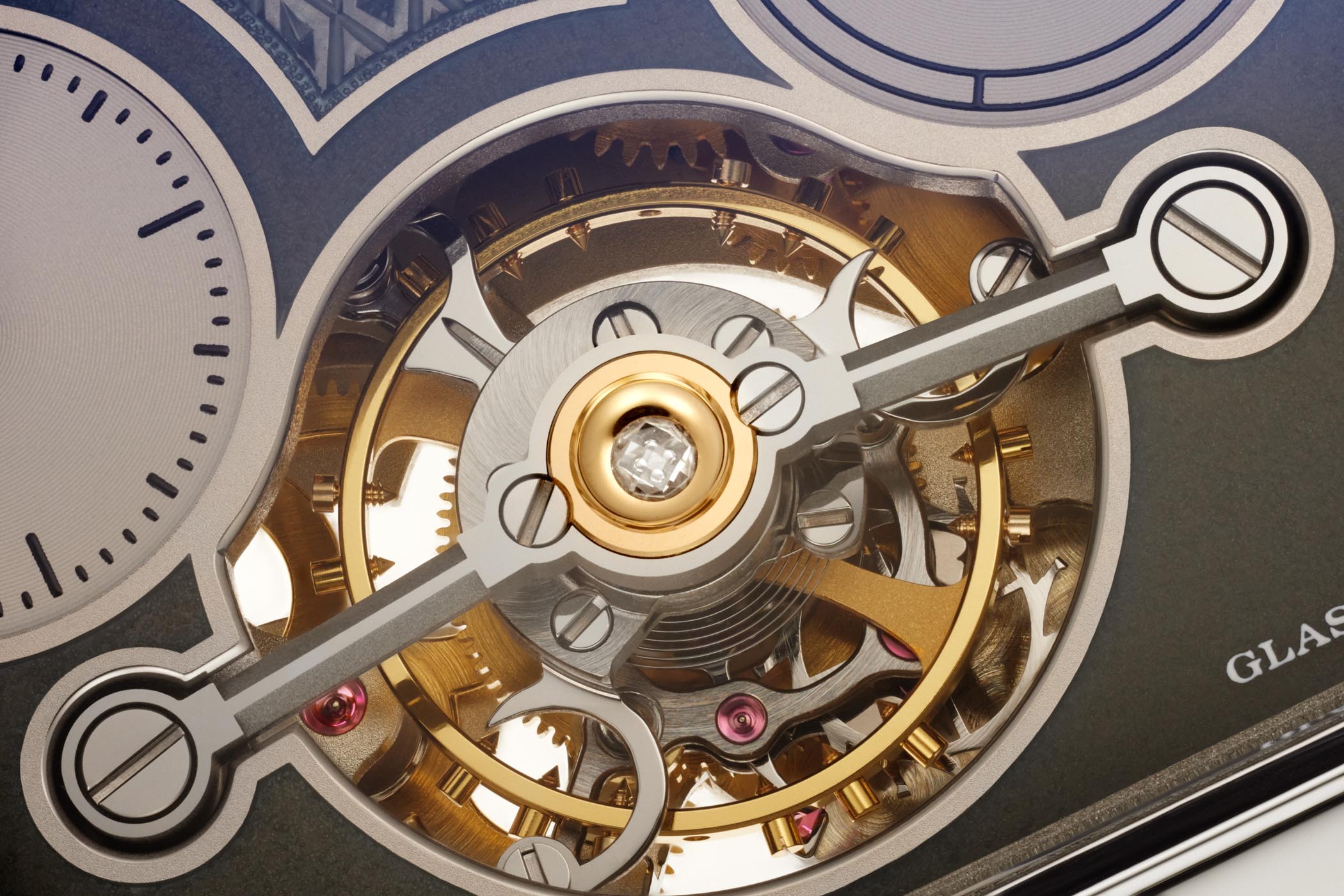



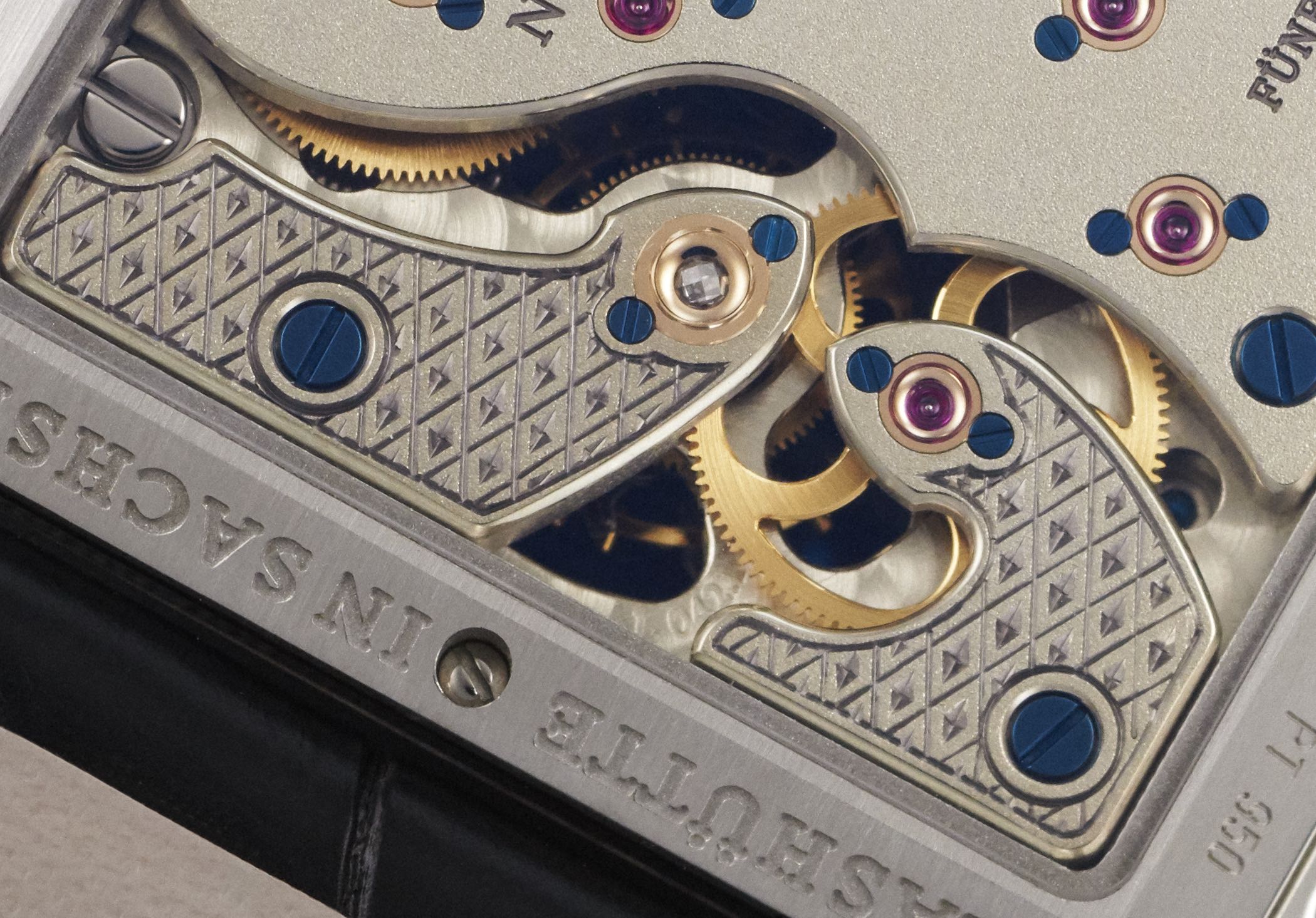



3 responses
I think this is the first time I’ve seen cut-off roman numerals somehow look better than full ones. Work of art.
Sadly it falls short of greatness for one small detail: the pusher next to the crown. If you go for top of the watch world, that detail should really have been better integrated.
I am not one to typically gravitate towards a rectangular design. However, the detail on this dial is absolutely stunning and truly a piece of art.